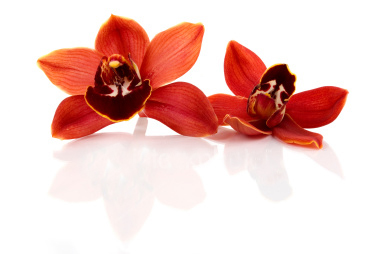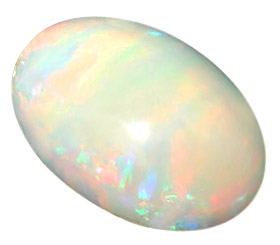From Concept to Jewelry Design
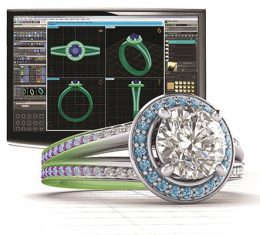 Step 1 – From Concept to 3D Rendering
Step 1 – From Concept to 3D Rendering
When creating a new design, we first build the piece of jewelry in 3D on a computer. It is here that we design every fine detail to exact measurements and produce a 3D rendering of our design.
Step 2 – 3D Printing
Once the 3D rendering is complete, we are ready to send the design specifications to a 3D printer so we can produce a wax model.
Step 3 – Use the Wax Model to Cast the Design in Metal
The wax model we have created is mounted on a wax rod called a sprue, which allows us to mount the design inside a steel cylinder. A material called investment is poured into the steel cylinder containing the wax model. When the investment dries, it is removed from the cylinder and placed inside a kiln. The high temperature melts the wax, leaving a mold of the design. Molten metal is then poured into the mold and takes the shape of the design. The mold is then placed in water and broken to release the casting of the design.
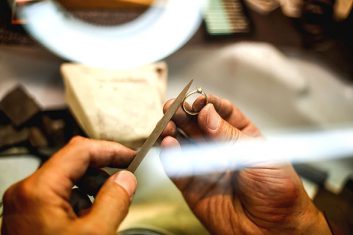 Step 4 – Fine Adjustments
Step 4 – Fine Adjustments
A jeweler cleans and files the casting to ensure it is smooth, and that any sign of the sprue that it was attached to during the casting process is removed. The casted design is also measured to ensure it meets the desired specifications.
Step 5 – Final Polishing
The newly created design is carefully polished using various brushes to give it a nice finish.
Step 6 – Quality Control
A jeweler looks closely at the model to ensure there are no scratches, dents or other imperfections.
Step 7 – Prototype
After a new design passes quality control, the final result is what we call a Master Model (or prototype). If the item is designed for multiple sizes – like various ring sizes, for example – then we will repeat the process and create a separate Master Model for each size. To reproduce a jewelry design, we simply make a rubber mold from our model, which is then used in the manufacturing process.
Our Manufacturing Process
Step 1 – Your Order
After placing your order, an Anjolee Jewelry Specialist will review the options you chose for your design and select the diamonds and/or gemstones that will be used to manufacture your piece. Anjolee selects only natural, authentic and genuine diamonds and gemstones. We never sell diamonds or gems that are treated, enhanced or created in a lab. Your diamond jewelry is accompanied by an Anjolee Certificate of Authenticity that verifies diamond color, clarity, cut, carat weight, shape, diameter, number of stones, polish, fluorescence, metal type and purchase value.
It is all part of our Anjolee Signature Diamond™ quality standard that distinguishes our products in terms of excellence, perfection, expertise and assurance. We also comply with the Kimberly Act of 2003, which requires that rough diamonds are mined from legitimate operations, sealed in tamper-resistant containers and certified to be conflict free by a strict system of forgery-resistant documents and serial numbers. We only select diamonds from dealers and suppliers that comply with the Kimberly Act’s provisions to ensure every diamond we sell is conflict free.
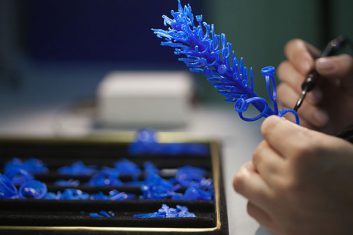 Step 2 – Manufacturing Begins
Step 2 – Manufacturing Begins
Once a Jewelry Specialist has reviewed your order and selected your stones, the specifications are handed off to our production team to begin the manufacturing process, which starts in the Wax Department. This is when your piece of jewelry begins to take shape.
Each individual jewelry design has its own rubber mold and our Wax Specialists begin by injecting the molds with liquid wax. After the temperature cools, the wax is removed from the rubber mold.
A wax tree is used to hold all of the cooled wax that has now been formed into pieces of the jewelry design, including the very small pieces needed to create our secure locking clasps and mechanisms. A different wax tree is created for each metal type and color that is ordered. For example, one tree is created for pieces that are being manufactured in 18K yellow gold and another tree for pieces made in 18K rose gold. A piece that is two-tone, meaning it is made of two separate metals, is created by attaching pieces from two separate trees.
Step 3 – Casting
Once a wax tree is complete, our Casting Specialists begin a process called investment casting, which is one of the oldest known metal forming techniques. The process of casting your piece of jewelry begins by placing the wax tree inside a steel cylinder. Liquid investment is poured inside the cylinder. The investment quickly hardens, completely encasing the wax tree.
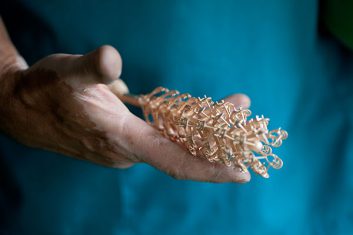 The cylinder is then placed inside an oven so the wax can evaporate, leaving only the investment. This part of the process takes several hours and is often done overnight.
The cylinder is then placed inside an oven so the wax can evaporate, leaving only the investment. This part of the process takes several hours and is often done overnight.
The investment is removed from the oven. While the cylinder is cooling, pure gold and metal alloys are mixed and liquefied to create the desired metal type and color. Gold in its purest form is 24K and is extremely soft and pliable, meaning it is not desirable for jewelry manufacturing. Thus, alloy is mixed in to strengthen the metal and create specific colors. For example, 18K gold consists of 75 percent pure gold and 25 percent alloy. And 14K gold consists of 58.33 percent pure gold and 41 percent alloy. Different types of alloy are used to create yellow gold, white gold and rose gold.
The liquid metal is poured inside the investment cast to form the jewelry. Once the precious metal solidifies inside the cast, it is time to break open the investment and remove the tree.
Cutting Specialists will then carefully cut links off the tree and sort them for the various orders. The tree’s stem is melted and re-used for future castings, and the leftover investment is collected, securely packaged and transported to an authorized disposal facility.
Step 4 – Jewelers Assemble and Refine The Design
Now that precious metal jewelry pieces have been created, Assembly Specialists are ready to build your jewelry. They carefully connect the pieces together to form the piece you ordered – whether it is a ring, bracelet, pendant or pair of earrings. Your item is measured to confirm it is the correct length, and that the number of stones that will be set into the piece is correct. The pieces are then soldered together.
Any locks needed are attached, and assemblers will perform any last-minute filing and touch-ups that are required. A Master Jeweler then examines the quality of your piece and makes any necessary adjustments. The assembly process requires incredible attention to detail and Anjolee is proud to employ trained jewelers with years of industry experience who work on each order with the highest level of craftsmanship.
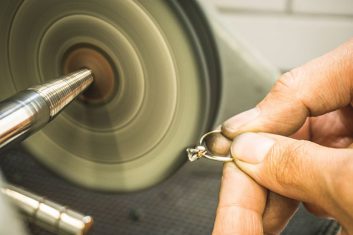 Step 5 – Polishing
Step 5 – Polishing
After being assembled, your jewelry is cleaned and polished. Three different types of brushes are used to properly polish your piece. Additionally, sophisticated dust collector machines help ensure that all remaining metal particles are reclaimed as part of our green manufacturing process.
Step 6 – Stone Setting
After polishing, Setters begin carefully setting each diamond and/or gemstone to ensure beauty, a secure fit and quality are met. Once completed, your piece receives a final polishing.
Step 7 – Quality Control
Before we ship your order to you, we perform a thorough quality control inspection. The assembly, sturdiness of lock, stone setting, and polishing quality are inspected to make sure your piece meets our quality standards and a production manager performs a final inspection.
Step 8 – Shipping
 White gloves are used to place your newly crafted jewelry inside a deluxe wooden jewelry box. It is then packed inside a beautiful blue Anjolee box that is perfect for gift giving. An LED light inside the wooden jewelry box adds a special touch to the ‘unboxing’ experience.
White gloves are used to place your newly crafted jewelry inside a deluxe wooden jewelry box. It is then packed inside a beautiful blue Anjolee box that is perfect for gift giving. An LED light inside the wooden jewelry box adds a special touch to the ‘unboxing’ experience.
Our Green Manufacturing Promise
Our clean manufacturing process utilizes many innovative ways to ensure a small footprint, a point we are very proud of. Almost everything within our production facility is recycled and we have clean procedures in place to ensure that no waste from our facility ends up polluting the environment. For example, metal dust from our polishing process is collected in special machines that allow us to re-use the metal for manufacturing. Everything we use in production, down to the polishing cloths, are properly disposed of once they have reached their lifetime use. Anjolee is committed to not only designing and manufacturing the highest quality jewelry for our customers, but to creating a better world for everyone.


